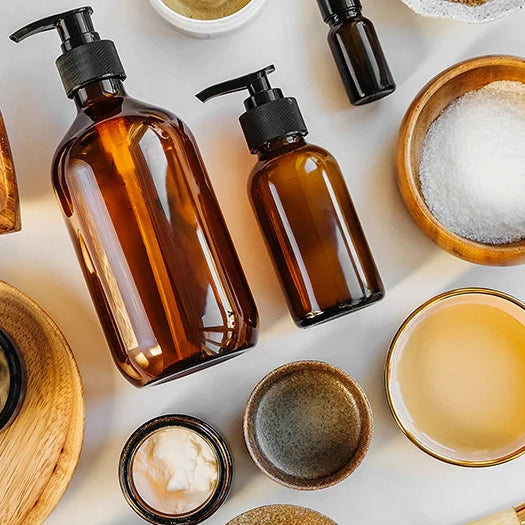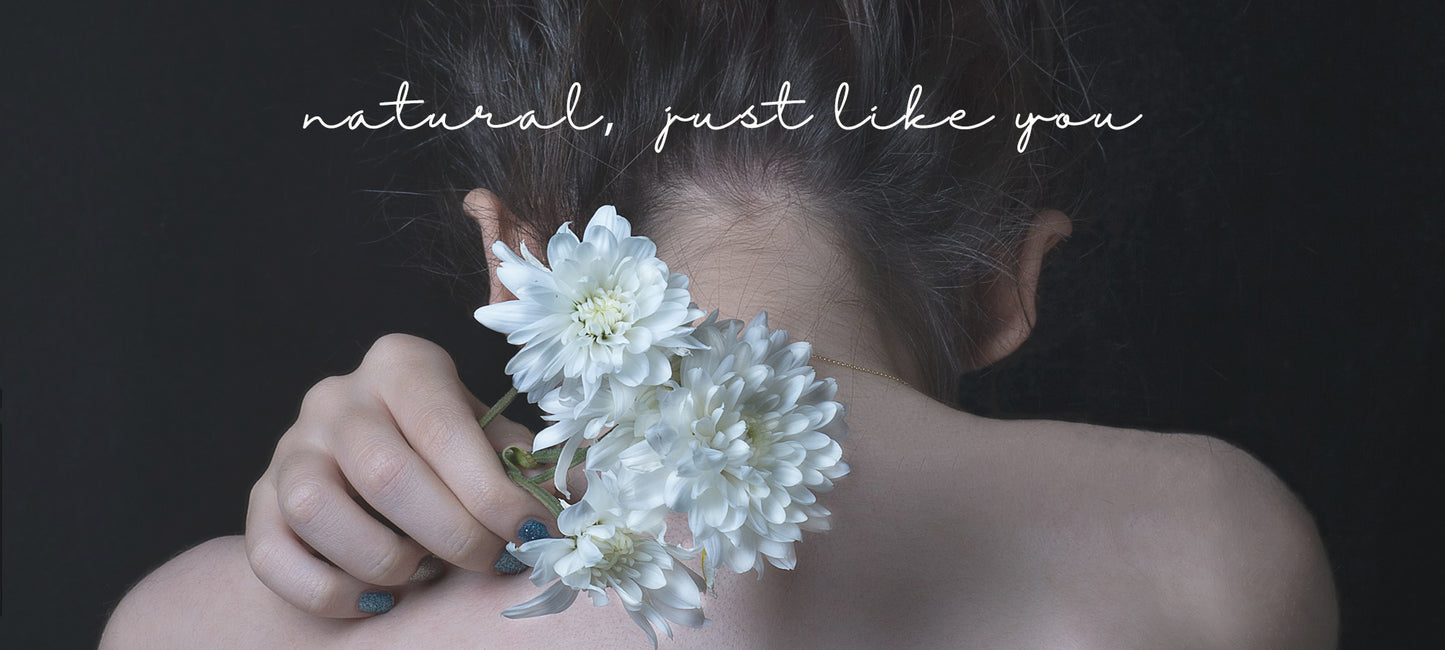
We know you care about what you put on your skin as much as what you put in your body, but there's some sneaky culprits that might be lurking in your beloved skincare products and wreaking havoc on your skin's health and your overall well-being.
So how do you ensure the skincare product you've chosen is truly toxin-free? When it comes to safeguarding your skin and overall health, being an informed and conscious consumer is key. Start by flipping that product over and giving the ingredient list a thorough glance.
Unfortunately, it’s not enough to look out for buzzwords like “organic,” “natural,” and chemical-free. You really do need to take a closer look at the ingredient list itself.
As a general rule, the fewer, simpler and more recognisable the ingredients are, the better. If the list resembles a chemistry experiment, it could be a red flag.
When in doubt, a quick online search can provide valuable insights into a product's reputation and potential risks. Remember, your skin deserves the best, so a little extra research can go a long way in ensuring you're nourishing it with the goodness it truly deserves.
Here’s a list of 10 ingredients to look out for.
1. Parabens
Parabens are synthetic compounds which are widely used in skincare as a preservative to help prevent the growth of bacteria, mould and yeast. And while it’s great that it helps extend the shelf-life of your favourite skin care product, parabens have a potential nasty side.
Parabens have been linked to hormone disruption and potential health risks as they can mimic the activity of oestrogen in the body, disrupting hormonal balance and potentially leading to a range of health concerns. While research is ongoing, some studies have indicated a link between paraben exposure and breast cancer, reproductive issues, and endocrine disruption. These chemicals are absorbed through the skin and have been identified in biopsy samples from breast tumours. Parabens can also cause skin sensitivities, irritation, and allergic reactions in some individuals.
Considering these potential risks, opting for paraben-free skincare products is a safer choice to ensure your overall well-being and maintain a healthier, harmonious relationship with your skin.
Parabens can be found in make-up, body washes, deodorants, shampoos and facial cleansers. You can also find them in pharmaceutical products.
2. Synthetic Fragrances:
That wonderful scent in your lotion? It could actually be a mix of undisclosed chemicals. The word fragrance could be hiding around 3,000 different chemicals.
Synthetic fragrances can cause skin irritation and even trigger allergies. Opt for products scented with natural essential oils instead.
We proudly support One Seed, made in South Australia. This company creates wonderful perfumes that are 100% natural.
3. Sulphates:
Squeaky clean might sound good, but not at the expense of your skin's natural oils. Sulphates like SLS (sodium lauryl sulphate) can strip your skin of its moisture and leave it feeling dry and irritated.
It’s a common ingredient found in more than 90 per cent of personal care and cleaning products. A major concern about SLS is its potential to interact and combine with other chemicals to form nitrosamines, a carcinogen. These combinations can lead to a host of other issues like kidney and respiratory damage.
SLS can often be found in shampoo, body wash/cleanser, mascara and acne treatment.
4. Formaldehyde Donors:
Formaldehyde might be used to preserve dead frogs in biology class, but you definitely don't want it on your skin. Some beauty products contain formaldehyde-releasing preservatives (FRPs) that can cause skin sensitivities and irritation.
FRPs are used in many cosmetic products to help prevent bacteria growth, but it’s been deemed a human carcinogen by the International Agency for Research on Carcinogens (IARC), with links to occupational related cancers: nasal and nasopharyngeal.
It’s also known to cause allergic skin reactions and may also be harmful to the immune system.
FRPs can be found in nail polish, body washes, conditioners, shampoos, cleansers, eye shadows, nail polish treatments.
Avoid products containing DMDM hydantoin, Imidazolidinyl urea, Diazolidinyl urea, Quaternium-15, Bronopol (2-bromo-2-nitropropane-1,3-diol ), 5-Bromo-5-nitro-1,3-dioxane, Hydroxymethylglycinate.
5. Phthalates:
These sneaky chemicals are often found in fragrances and plastics, but they can mess with your hormones and potentially lead to long-term health concerns.
The main phthalates in cosmetics and personal care products are dibutyl phthalate in nail polish and diethyl phthalate in hair spray. They are known to be endocrine disruptors and have been linked to increased risk of breast cancer, early breast development in girls, and reproductive birth defects in males and females. Unfortunately, it is not disclosed on every product as it’s added to fragrances, so try and look for products that proudly declare themselves phthalate-free.
Phthalates can be found in deodorants, perfumes/colognes, hair sprays and moisturisers.
Avoid products containing ingredients such as phthalate, DEP, DBP, DEHP. and fragrance.

6. Mineral Oil:
Derived from good old petroleum, mineral oil might seem harmless, but it forms a barrier on your skin that can not only prevent the absorption of external moisture, ultimately drying out your skin, but it can clog your pores leading to breakouts.
Petrolatum-based products are used because they give the temporary illusion that the skin is soft and hydrated. Due to the large number of cheap imitations and mass productions, there are risks of contamination when using this ingredient, leading to adverse results. It’s always best to look for plant-based oils like jojoba or coconut for a healthier alternative.
Avoid products containing ingredients such as white petroleum soft paraffin, mineral oil, paraffin oil, white mineral oil, and liquid paraffin.
Words on labels to look out for include Mineral oil, Paraffin wax, Benzene, and any names that end with ‘-eth’.
7. Synthetic Colours:
One of the ingredients that go into the base for vibrant and brighter colours, generally used in lipsticks and eyeshadows, is coal tar. While bright coloured products might catch your eye, they’re achieved using synthetic colours that can cause skin irritation.
Because coal tar is a heavy substance it also weighs down the skin, causing irritation which can result in allergic breakouts. Manufacturers get away with using what’s described as “minimal amounts” in cosmetics to be “safe” for human usage.
In our experience, natural colourants, like fruit extracts, are a much safer bet.

8. Oxybenzone:
Oxybenzone (benzophenone-3 or BP-3) is a chemical commonly found in sunscreens but is also used by companies to stabilise the colour and scent of skincare products. This chemical has been found to cause severe skin allergies, redness and irritation.
One of the big problems with oxybenzone is its ability to be easily absorbed into the body, which may then accumulate to potentially toxic levels, affecting the endocrine system. Studies have shown oxybenzone may mimic the hormone oestrogen, possibly leading to conditions such as skin and breast cancer. Oxybenzone has also been linked to coral reef damage.
Fortunately, there are natural and safe sunscreen brands that don’t contain oxybenzone. Make sure you look for mineral sunscreens with zinc oxide or titanium dioxide for sun protection without the worry.
Avoid products containing Oxybenzone, “benzophenone-3”, “BP-3”.
9. Ethanolamine Compounds (MEA, DEA, TEA and others)
These abbreviations might sound like alphabet soup, but they're actually chemicals used to adjust a product's pH level. They can be harsh on your skin and even form potentially harmful byproducts when they come into contact with other ingredients.
Ethanolamine is found in a multitude of cosmetics and skincare products from moisturisers to baby sunscreen. Common ethanolamines include monoethanolamine (MEA), diethanolamine (DEA), and triethanolamine (TEA). These chemicals are primarily used as surfactants (foaming agents), cleansers, or preservatives.
Research from the National Toxicology Program in the US found an association between the topical application of DEA and certain DEA-related ingredients and cancer in laboratory animals.
Avoid products containing ingredients such as Cocamide DEA, DEA-Cetyl Phosphate, DEA Oleth-3 Phosphate, Lauramide DEA, Myristamide DEA, Oleamide DEA, TEA-Lauryl Sulfate, Triethanolamine.
10. Triclosan
Triclosan is a synthetic chemical that has been used for decades in personal care products, such as antibacterial soaps, toothpaste, and deodorants, due to its purported antimicrobial properties. It was initially introduced to help combat harmful bacteria and promote hygiene. However, concerns have arisen regarding its potential risks. Triclosan has been found to disrupt the endocrine system and interfere with hormone regulation, which can have a ripple effect on various bodily functions.
Furthermore, its widespread use has led to the development of antibiotic-resistant bacteria, diminishing its effectiveness over time. As the understanding of the potential negative impacts of Triclosan grows, it's becoming increasingly evident that choosing products free from this ingredient is a wiser and safer choice.
Avoid products containing Triclosan (TSC), triclocarban (TCC).
Remember, taking care of your skin goes beyond just a surface-level routine. By avoiding these toxic ingredients, you're making a conscious choice to support your skin's health and your overall well-being. At Nood Mood, we're committed to providing you with organic and natural skincare products that are free from these harmful substances. Your skin deserves the very best, and we're here to help you shine, naturally!





